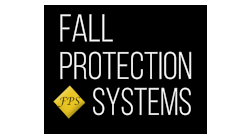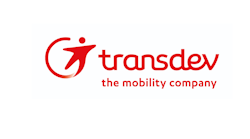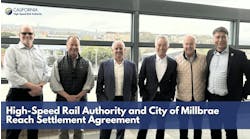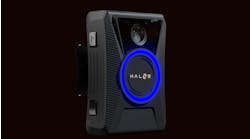Improving Rail Safety
Alexandria, Va.
Joyce Rose
President and CEO
Operation Lifesaver Inc.
Transit is one of the safest ways to travel in the United States. According to the National Safety Council, the lifetime odds of being killed as a rail passenger are 1 in 178,000, compared to the 1 in 415 odds of being killed as an occupant of a passenger car.
A closer look at recent transit fatality statistics reveals where the problem areas lie. According to FTA statistics, 262 people died in transit-related incidents in 2012 (not including commuter rail systems, which are regulated by the Federal Railroad Administration). Seventy-one percent, or 186, of these fatalities were pedestrians and trespassers, non-employee occupants in transit facilities, or occupants of privately-owned vehicles that collided with transit vehicles. Twenty-three percent, or 61 people, committed suicide. Only 15 transit-related fatalities in 2012 were passengers or employees.
In other words, the vast majority of fatalities on transit systems are caused by the same behaviors that led to 96 percent of all fatalities on the general railway system last year: people driving, walking, or bicycling in an unsafe manner around rail crossings and railroad tracks, or acting carelessly on rail stations and platforms.
This is why I am a passionate advocate for active transit agency involvement in Operation Lifesaver, the national rail safety education organization whose mission is to end collisions, deaths and injuries at highway-rail grade crossings and on rail property. Operation Lifesaver spreads its safety message through a nationwide network of trained volunteers who educate people about rail safety. Operation Lifesaver Authorized Volunteers (OLAVs) make safety presentations to the public, including school groups, new drivers, truck and bus companies, law enforcement representatives, emergency responders, and other community groups. Many transit systems are already part of the Operation Lifesaver family; some 26 different transit agencies have employees who are OL volunteers, including New York Metropolitan Transit Authority, Dallas Area Rapid Transit, Southeastern Pennsylvania Transportation Authority, and Utah Transit Authority.
It is fun and rewarding to become an OLAV. After filling out an online application, an applicant goes through Operation Lifesaver’s online authorized volunteer education program that reviews the basics of public safety around rail systems and helps volunteers understand the most effective ways to make connections in the community and arrange safety presentations. Following completion of the online classroom session, the potential volunteer has a face-to-face session with his or her Operation Lifesaver state coordinator or Operation Lifesaver coach to learn OL’s policies and procedures and practice making safety presentations. Operation Lifesaver provides OLAVs with educational materials to use in their presentations, including materials geared specifically to transit systems and their safety issues.
Incorporating a proven public safety education program like Operation Lifesaver into your agency’s safety plan is a smart and cost-effective way to address transit safety issues with the highest risk of injury or death. Providing public safety education as an Operation Lifesaver Authorized Volunteer builds stronger relationships between your transit agency and the community you serve, and it saves lives. Begin your journey as an Operation Lifesaver Authorized Volunteer at oli.org/training/volunteer-for-oli.
Cincinnati, Ohio
Paul Grether
Director of Rail Services
Cincinnati Metro
Although the Cincinnati Streetcar won’t operate until September 2016, the Southwest Ohio Regional Transit Authority (Cincinnati Metro) is already educating the community about streetcar safety.
Transdev Services Inc., which was recently awarded the contract to maintain and operate the Cincinnati Streetcar for SORTA, is preparing intensive operational and community safety training jointly with SORTA and city of Cincinnati staff and contractors. This is a part of the SORTA Cincinnati Streetcar Safety and Security Management Plan, which was developed as part of SORTA safety and security certification efforts as required under project safety requirements. SORTA has established a series of committees comprised of SORTA, City of Cincinnati and contractor staffs to manage the safe, secure and successful start of streetcar service. These include the Rail Activation Committee, the Safety and Security Review Committee and the Fire Life Safety and Security Committee composed of local police, fire, utilities and public safety representatives responsible for training first responders on how to handle incidents on or near the streetcar. These committees also manage the ongoing certification requirements of the Ohio Department of Transportation (State Safety Oversight) and the Federal Transit Administration.
Feedback from these committees led to the creation of the “Be Streetcar Safe” campaign designed to provide customized safety messaging for cyclists, Metro bus operators, motorists, people with disabilities, downtown visitors, and children.
Look up… Look out: To educate the public on the danger of getting too close to the high-voltage overhead wires that power the streetcar, SORTA and the City of Cincinnati have been educating those in the area to stay at least 10 feet from the contact wire, with a campaign called “Look up… look out.” Traditional and social media has been used, in addition to holding a media briefing and contacting utility companies, businesses and community councils in the area. Fliers were also distributed during community events throughout the summer.
Bus operators: With Cincinnati introducing modern rail transit, SORTA is taking steps to ensure that its bus operators know how to share the road with the streetcar. Safety tips are included in employee newsletters, streetcar safety training is being added to bus operator training, and a “Share the Road With the Streetcar” video is in production to highlight safety tips for operating along the streetcar route.
Cyclists: SORTA partnered with bike advocacy group Queen City Bike to provide free streetcar bike safety classes to the public. The class teaches cyclists how to cross the tracks at a correct angle to ensure the safe interaction between bicycle tires and streetcar rails. SORTA also partnered with the local bike share system to add streetcar safety decals on their entire bike fleet.
People with disabilities: SORTA shared streetcar safety tips for people with disabilities during ADA anniversary celebrations this summer. Cincinnati’s streetcars will be 100% low floor and feature fully level boarding. Education has started for riders using wheelchairs and mobility devices about the differences between boarding, travelling and alighting from the modern streetcar versus buses.
Visitors to downtown: As an innovative way to get the word out to those who visit downtown, SORTA partnered with a local distributor that sponsored the production of thousands of reusable drink coasters with streetcar safety tips. These will be distributed free to restaurants and bars along the streetcar route beginning this fall.
Children: A child-friendly version of the safety program called “Bee Streetcar Safe” features a bee mascot to educate children about streetcar safety. The kids’ program will kick-off with a Touch the Streetcar event when the first car arrives later this year.
Safety is the primary objective for the operations of the Cincinnati Streetcar and SORTA will continue to frequently find opportunities to share the message of safety with the public.
Philadelphia, Penn.
Larry Light
Director of PTC
Systra Consulting
One of the most sought after safety systems, Positive Train Control, has been on the National Transportations Board’s “Most Wanted List” for many years. Yet, despite nearly seven years of anticipation for FRA’s PTC deadline and nearly 20 years of awareness of system requirements, most carriers will not have a PTC system by Dec. 31. With more than 40 railroads filing for installation of PTC under the mandate, few will have PTC in revenue service on time. Four principal factors impacting timely completion are:
1. Complexity of the chosen architecture
2. Individual railroad’s safety philosophies
3. Availability of multiple vendors
4. Development time available, given 1, 2 & 3 above
These four factors are best illustrated by visiting brief histories of four very different PTC technologies seeking certification as FRA “Type-Approved” (TA) PTC.
ATC/ACSES had a significant head start on the other three systems, beginning in 1993 with the goal of 150mph for high speed trains in the Northeast Corridor. With the simplest architecture, a unique blend of domestic ATC and European transponders following FRA’s established safety “Rules, Standards & Instructions for Signals (The “RS&I”), and with availability from multiple vendors, Amtrak has received final FRA TA certification and expects to meet the deadline for its lines in the Northeast. However, due to a later start, other agencies in the Northeast with lines adjacent to Amtrak will not meet the deadline.
ITCS, was first conceived in 1995 with the original goal of breaking the “79mph barrier”, and with multiple improvements“ in service”, 2000 - 2012, Amtrak began 110mph operation in February 2012 and received final FRA “TA”PTC certification in December 2012. ITCS is RS&I compliant with simpler architecture than I-ETMS, and has an important highway crossing warning advance start feature saving millions upon deployment in the emerging corridors with many road crossings. ITCS has one vendor, but thanks to an early start, Amtrak-owned lines in Michigan and Indiana will meet the deadline.
I-ETMS, is a “blend” of BNSF’s “ETMS” (non-vital) and UPRR’s “V-ETMS” (Vital?), which when merged as “I-ETMS” appears to have strayed from the goal of vitality. This has led to recent FRA challenges regarding many safety concerns. Unfortunately, pursuit of corollary benefits has created an architectural complexity resulting in a costly increase in overall completion time. Of all the railroads seeking to deploy I-ETMS, only Southern California’s Metrolink expects to be PTC ready by the deadline. Currently, there is only one vendor available to supply the needs of many railroads.
E-ATC, an extension of the ATC concept, is the simplest of all the systems in architecture and safety philosophy (RS&I Compliant); can be supplied by multiple vendors, and can be developed relatively quickly for new PTC initiatives. And while at least two PTC initiatives are able to eliminate data radio and transponders, this is not always possible without losing needed operational utility.
In conclusion, the combination of later deployment of I-ETMS and a lack of consideration for the “four factors” has resulted in the need for additional implementation time. With the majority of carriers filing to install PTC committed to the I-ETMS technology, this has caused much anxiety for a large segment of the industry not meeting the deadline, and with the lack of multiple vendors, budgets are being strained to the breaking point. If granted, a congressional extension of the deadline could provide time for some operators to consider simpler, more mature and less costly alternatives.
Mississauga, Ont.
Paul Carey
Product Manager-Technology Solutions
Bombardier Transportation
Company-wide, Bombardier Transportation has made Health, Safety, and the Environment (HSE) our highest priority. From our president to all sites across the globe, we are strengthening existing processes while developing innovative initiatives to reinforce our HSE Preventive Culture.
Common sense principles such as “expect train movement in any direction at any time” training, with established Blue Signal and Lock-Out/Tag-Out procedures, help keep the thousands of skilled tradespeople, site visitors and contractors at our operations and maintenance sites safe every day. Yet despite comprehensive training efforts, near misses and injuries still occur while on the job. To improve our safety performance, one of the areas we focused on was enhancing awareness of the location of rolling stock and of the people working on or around the equipment. This initiative led to the development of our YardSafe™ Technology Solution.
YardSafe uses Radio Frequency Identification (RFID) technology to track worker and train locations through readers and user-friendly tagging stations. Train locations are tracked in real time while workers tag in and out of track and consist locations. The system prevents workers from tagging into trains that are not safely secured and trains that are scheduled for imminent moves. Large trackside screens allow supervisors and staff to see where all workers are relative to train consist and working locations. YardSafe also simplifies a supervisor’s ability to schedule consist moves, and communicate these moves to workers using color coded track status indicators.
Eliminating the human error of a misplaced tag on a location board, YardSafe updates people and equipment locations in real time on large screen monitors and networked mobile devices. That alone is significant, but we wanted to take it one step further. Our Bombardier Operations and Maintenance team at the NJ TRANSIT RiverLine site in Camden, New Jersey further integrated YardSafe with their automated mechanical track derails and blue flags. Now when the employee in charge uses YardSafe to set the tracks to “secure”, the mechanical derails and flags automatically rise into position.
For the safety of lone workers we’ve designed a small wearable device that wirelessly connects to YardSafe. This business card size device fits in the pocket of a high visibility safety vest, or can be worn around the neck or as an armband. The unit updates YardSafe with the employee’s location, as well as provides the lone working employee with textual, audible and vibration alerts when equipment is moving in his area. An easily accessible safety button on the device provides the worker with a quick way to notify all staff in case of an emergency.
Of course, while technology can never replace quality training and common sense, YardSafe enhances good safety practices and the commitment to continuous improvements in rail and transit.
Niles, Ill.
Samuel Shanes
Talkaphone
Clear and effective communication can keep riders, workers and pedestrians safe on rail transportation. The installation of emergency blue light towers, wall mounts and call stations can not only help communicate a message during an emergency but can also help deter criminals from targeting the area.
Keeping staff and riders informed of an emergency is a great first step but is not the last. While security cameras and phones can supply critical information to security personnel, many rail systems are choosing to empower people to take action during certain emergencies. Immediate action taken by mass transit riders can save lives, if the platform is equipped with the right tools. Unfortunately, occurrences such as a person falling on the tracks are not that rare. Many local transit authorities have taken preventative measures.
For example, the Phoenix (Arizona) Light Rail and the Sacramento (California) Transportation Authority installed Talkaphone’s Blue Light Stations (BLS) on their platforms equipped with emergency power trip buttons. The unit empowers everyday users of public transportation to cut power to the tracks by pushing the E-stop button.
Units include IP Call Stations, highly visible Blue Lights, emergency lettering and instructions, raising awareness of public transportation riders. In some locations the units are wall mounted, and in others mounted on their own integrated stainless steel post.
In addition to ensuring communication, rail system authorities should be aware that the transition area from one form of transportation to the next is highly vulnerable. Emergency phones are strategically placed in such locations to allow the general public to report any suspicious activity that might be taking place. This technology has been employed at various transit authorities in the United States, including the Chicago Transit Authority (CTA) Orange Line connection to Chicago’s Midway Airport.
Parking garage and outdoor parking lots adjacent to urban rail hubs should not be forgotten when designing the security strategy. Proper access points planning, emergency call stations and surveillance all play an important role in enhancing security. Consider utilizing a blue light emergency tower or wall mount with call station to provide emergency communication capabilities.
A multi-layered security plans is crucial to keeping workers, riders and pedestrians safe in the rail transportation environment. Providing these types of tools for people to communicate and empower themselves against the dangers is a critical step to creating a safe and secure environment.
Stockbridge, Mass.
Rosalie Berger
President & CEO
RTR Technologies
As transit infrastructures around the United States are aging, millions are invested in comfortable, sleek train cars and modern track replacements. But in cold weather climates the imperatives for improvement call for a more intensive set of solutions: cold-region passengers, personnel and infrastructure are at risk without aggressive, reliable snow and ice mitigation technologies. And since winter weather troubles are among the top causes of leadership shakeups at transit authorities, there’s more than one reason to plan for the best possible cold-weather technology when it comes to infrastructure upgrades.
Contact rail heat, switch point heaters and ice and snow mitigation solutions for station platforms are readily available as integral aspects of infrastructure upgrades.
Although some such improvements are driven in response to bad winters, passenger upset and political considerations, increasingly there are pro-active exceptions: More transit leaders are prioritizing winter safety as integral to overall infrastructure improvements and modernization.
In Boston several years ago – prior to last winter’s crippling of the MBTA – the authority began exploring an improved contact rail heat and switch heat telemetry and control system. Those $9 million projects are now under way. The new Washington-Dulles Corridor Metrorail Project’s 23-mile Silver Line expansion includes switch heat systems to keep trains moving in a region easily paralyzed by cold, ice and snow – a $19.6 million installation.
Technologies such as contact rail heat and switch heat have translated well for winter-region transit authorities. The authorities in New York, Toronto, Chicago and Philadelphia using cold-weather technologies tally the lowest total cost of ownership (TCO) and the highest ROI, along with vast improvements in mean time between failures and mean time to repair.
Winter safety solutions improve rider experience and reduce overtime costs associated with transit delays. But today’s winter solutions are also energy efficient and, therefore, cost-effective for the bottom line.
RTR projected a 10-year, $60 million energy cost savings for the New Jersey Transit Authority with new switch-point heaters. Two years into the new system, NJ Transit expects to meet or exceed those projections.
More frequently, energy companies are playing an increasingly vital role in the transition to more energy efficient winter technology, in partnerships with their own transit customers. In Boston, the MBTA’s Winter Resiliency Project, for instance, financing has been achieved in a partnership with a major energy supplier, along with a matching contribution by the MBTA. A similar partnership helped finance the New York City Transit Authority’s winter-weather improvements some years ago.
There’s no time like the present to plan for a pro-active, systematic integration of winter solutions in cold weather regions. Everyone wins – the customers, the personnel, the transit authorities and the bottom line.
Buffalo Grove, Ill.
Umberto Malesci
President and Co-founder
Fluidmesh Networks
The number of practical applications of the Internet of Things (IoT) has grown exponentially over the past few years. Right now, the Internet of Things pretty much means the ability to interconnect all those objects and devices that didn't previously have a network connection. As a result of bringing these unconnected devices onto the network, we are enabling applications that increase safety and ease of use. Connected Railway projects are an excellent example - applying the Internet of Things to trains has improved safety, operational efficiency, and the passenger experience.
Railroad transport, since the introduction of electric traction was introduced at the beginning of the last century, is now viewed as one of the greenest ways on Earth of moving people and property. It is now experiencing a fantastic boost of expansion, innovation, investments, and popularity.
The heavy use of IT and networking technologies are completely redefining how trains will be run and managed in the next twenty years. Silicon is getting increasingly more relevant every day as the industry begins to understand how the so-called “smart rail” initiatives can deliver million of dollars of savings and, at the same time, save the lives of many people who die each year in railroad-related accidents. (Railroad transportation, however, continues to rank as the safest way to travel.)
Safety has always been a major concern for railroads. Speed and weight can make a train a very dangerous moving object whose braking distance is measured in miles. Therefore, its motion needs to be controlled and predicted as much as possible - last second reactions typically do not avoid accidents. Signaling vendors like Siemens, Alstom, Bombardier, and Ansaldo STS have been developing highly complex and secure systems to remotely control trains and avoid accidents. The level of automation and sophistication in train signaling is extremely high compared to other segments of the transportation industry. For example, almost 100% of the metro lines that have been constructed in the last five years are fully automated and driverless. Moreover, most of the existing trains in Europe have a driver but are able to brake based on remote signaling without any intervention from the driver. Railway companies understand that increasing automation is a necessary step to increasing the safety of their systems. According to the U.S. Federal Railroad Association (FRA), human error accounts for more than 60% of all rail-related accidents. So clearly there is still significant room to increase automation and reduce accidents due to human error.
There are three major systems within railroads where automation and the Internet of Things can bring significant benefits: signaling, interlocking, and level crossing control. Signaling systems control the movement of the train and remotely control train speed and braking. More traditional signaling systems are based on RFID along the train track, but wireless train to ground signaling is getting more and more common both in railroad and metro systems. For example, most of the new European high speed railroads are equipped with ETCS Level 2 - a signaling standard that requires constant radio communication between the train and the group. Based on the ETCS 2 standard, such radio communication is accomplished using the GSM-R technology with BTS installed along the track of the train. Interlocking, on the other hand, avoids those conflicting movements on the tracks at junctions and crossings by using red and green light signals. The interlocking system works in conjunction with the signaling system to prevent a train from getting a signal to proceed if the route is proven to be unsafe. Interlocking today is already implemented as a software-based system with a complex design that ensures that the highest degree of safety and the integrity level of all the vital functions is reached-SIL 4. But, the Internet of Things can further improve the system's level of automation and its integration with the signaling system.
Level crossings control is the third system that impacts safety on railroads. According to the European Railway Agency (ERA), 619 accidents occurred at level crossings in 2010, causing 359 fatalities in the European Union that year. (2009 stats show 831 level crossings-related accidents caused 405 fatalities that year.) Accidents related to level crossings represent 30% of all railway fatalities in the EU. Fluidmesh has been involved in some IoT projects for level crossing safety and it is impressive how technology can significantly improve safety in such an old system like a level crossing. In one project, we've been able to stream live video from cameras controlling a level crossing to the approaching trains, therefore showing to the train driver if somebody is trapped on the level crossing. We have integrated such a video streaming system with a Funkwerk on-board cab radio monitor that is already installed on locomotives equipped with the ETCS standard in Europe. Another interesting level-crossing automation project involved using thermal imagers to automatically detect people along the train track who might be trying to unsafely cross the track. Integration of video, radar sensors, and thermal imagers is an excellent IoT application to save lives at a level crossing.
Beyond safety, the Internet of Things is creating the opportunity to enhance the operational efficiency of railways. For example, the automation of toilets can significantly reduce the cost incurred by the train operator and, at the same time, provide a better service to passengers who will less likely find a toilet out of order. Currently, most train operators are unable to determine the status of the on-board toilets in real time and a significant amount of manual checking is required. Another example of an IoT application to improve operational efficiency is related to the management of the video recordings on board. Many rail operators have to send personnel on board their trains to manually pick up the hard drive when video recordings are requested by a law enforcement agency for investigation of an incident. Fluidmesh has been involved in many Connected Train initiatives to provide live streaming of video or automated off-loading when the train gets to a station or depot. Automating video offloading from the on-board hard drive to a central data center provides a significant saving in the amount of time spent in chasing trains to retrieve recorded video and, at the same time, allows them to keep relevant evidence for longer period of times. Automating a train's restaurant car can also improve efficiency and is another excellent example of how the Internet of Things can improve operations. Food and drinks can be easily refilled at the upcoming station if data is available in real time regarding the items sold. Moreover, temperature can be remotely controlled to avoid issues with refrigerators that might not be working at all times but whose temperature is critical to preserve the food quality over time.
Operational efficiency means moving from scheduled maintenance to predictive and preventive maintenance. Predictive and preventive maintenance can dramatically increase the percentage of times a train is in use rather than sitting in a maintenance or repair shop. It can also improve the passenger experience and their safety. For instance, train wheels need to be controlled and maintained regularly due to wear. Braking, and emergency braking in particular, accelerates wear on tires and therefore the need for maintenance checks. Slips and sliding of a wheel can even require immediate maintenance because the wheel can be seriously affected. Additionally, different sections of the tracks wear the wheels in different ways and times because of peculiarities in the track geometry itself, such as with steep or sharp turns. By tracking exactly the path of a train every day, its braking actions, and the sliding and slips of wheels, a train operator can develop an extremely precise predictive model that will tell the maintenance staff when to check a train and when to send it in for maintenance. Recording and processing the history of interventions of the ABS systems can tell a lot about the condition of the wheel profile and the consumption of the brake pads. The time between maintenance stops wouldn't be based on averages that might be too conservative in certain cases and waste money or, on the other hand, are not conservative enough, putting operation and safety at risk. By leveraging big data analysis techniques and the Internet of Things, railways are able to measure and track real operational data, perform maintenance at the right time, and predict their maintenance needs precisely.
An improved passenger experience and therefore an increase in ridership is another goal of many Internet of Things project for railways. Based on several railways surveys with passengers, connectivity is the major need of passengers on board trains today - they want a better Internet connection on board. The goal of most high-speed trains operators over the next five years is to allow a seamless connectivity experience on board. Passengers should be able to leave their home and jump on a train without affecting their Smartphone connection. Increasingly more passengers bring multiple devices on board with them and want to either work or entertain themselves using their own devices. Train operators now understand that broadband Wi-Fi on-board translates into a significant increase in ridership and are investing tens of millions of dollars to enhance their passengers' experience. Broadband wireless train to ground technology today is able to connect a train delivering up to 100 Mbit/sec, and the industry is already working on designing train to ground wireless solutions that will be able to scale to 1 Gbit/sec in the next five years.
The opportunity for Smart Rail projects and application of the Internet of Things to Railroads is massive. According to a recent press release from Cisco, almost $30B will be spent in the next 15 years on the IoT projects in the railway industry. Despite the significant size of the railway industry already, an average of $2B per year invested in Smart Rail and Connected Train projects will enable a revolution both in the way railroads are managed and in the experience of passengers on board. Silicon will start being a much more relevant element in this 200 years old industry which has for so long been dominated by steel.
Florissant, Mo.
Richard Gass
Director of Engineering
Fall Protection Systems
Throughout the country, safety awareness and knowledge is a growing concern for both employers and employees in the transit industry. Although the primary focus is brought to light by government regulation (OSHA), it is a growing concern for insurance underwriters, and safety experts in all fields. Based upon the increase that our organization has seen in requests for fall protection systems within the transportation field, we feel it is most important to have a clear understanding of OSHA regulatory requirements.
Often an organization’s ability to protect workers against falls of 4 feet or greater is limited by their ability to identify all the fall hazards within their facilities. It is common to find hazardous site conditions that frequently place individuals at risk. Unsafe hazards have become normal, everyday, operating procedure. Additionally, there can be violations that are missed by a safety audit because they only occur occasionally, that is until something goes wrong.
A common violation is an elevated walking surface with an unguarded edge on a relatively low elevation. Often, these surfaces are used for access to transportation equipment that is temporarily staged in a particular location. The walking surface may in fact be safe for use while the equipment is in place. However, when the equipment is removed, workers are exposed to unsafe heights without any fall protection. There are multiple options to protect workers in these instances, such as handrails and portable safety gates.
Working on elevated equipment without a platform to perform safety audits and maintenance tasks is another common fall hazard. For example, a simple audit that involves a worker verifying that doors open and close properly exposes the worker to fall risks and potentially, fall injuries. In this instance a safety gate will ensure worker safety. It can be set up inside a trolley or train prior to the door opening and can prevent any falls after the doors are opened.
Generally, maintenance tasks are performed atop of transportation equipment. In many cases there are no provisions on top of the equipment to prevent falls. A common practice is to install overhead fall protection that can attach to an existing structure or be freestanding over the equipment. The maintenance worker is able to tether to the fall protection system which, in the event of a fall, would arrest and protect them from sustaining injuries.
Fall hazards at substantial heights are easily identifiable, but violations at lower elevations are often unnoticed. However, it is proven that a fall from six feet is just as dangerous as a fall from ten feet. It is critical that companies involved with mass transit protect workers in these conditions. Should you have any questions as to worksite safety or fall hazards, there are several fall protection experts who can provide onsite analysis and compliant solutions.
Atlanta, Ga.
Paul Wojcik
Director of Sales
Railquip, Inc.
Moving rail vehicles by any mechanical means involves a variety of hazards, pinch points, runaway vehicles, run over possibilities and crushing opportunities are only a few. In our design of the B-Maxi, avoidance of unsafe conditions and opportunities was given the highest consideration. Emergency Stop Buttons, high visibility rotating beacons and a horn alert that the unit is in operation. Motor braking was designed in for controlled stopping, remote control operation is employed to keep the operator safely away from the coupling area and equipment in motion. All moving parts are shielded.
Derailments are a fact of life in the railroad and rail transit industries. When they happen it is essential that the vehicles involved be re-railed as quickly as possible without damage to equipment or injury to personnel. A re-railing system utilizing a high strength aluminum alloy to make the equipment robust while at the same time portable can help this. During the re-railing operation, once the system is assembled, the actual operation of lifting, horizontally moving and placing the equipment back on track is safely controlled by the operator at the control desk, at a safe distance from the de-railment. Older methods of re-railing using cranes, cribbing, levers and intensive manpower, working in inherently unsafe and unstable conditions have given way to this newer economical , highly efficient ,and safer approach to getting back on track.





